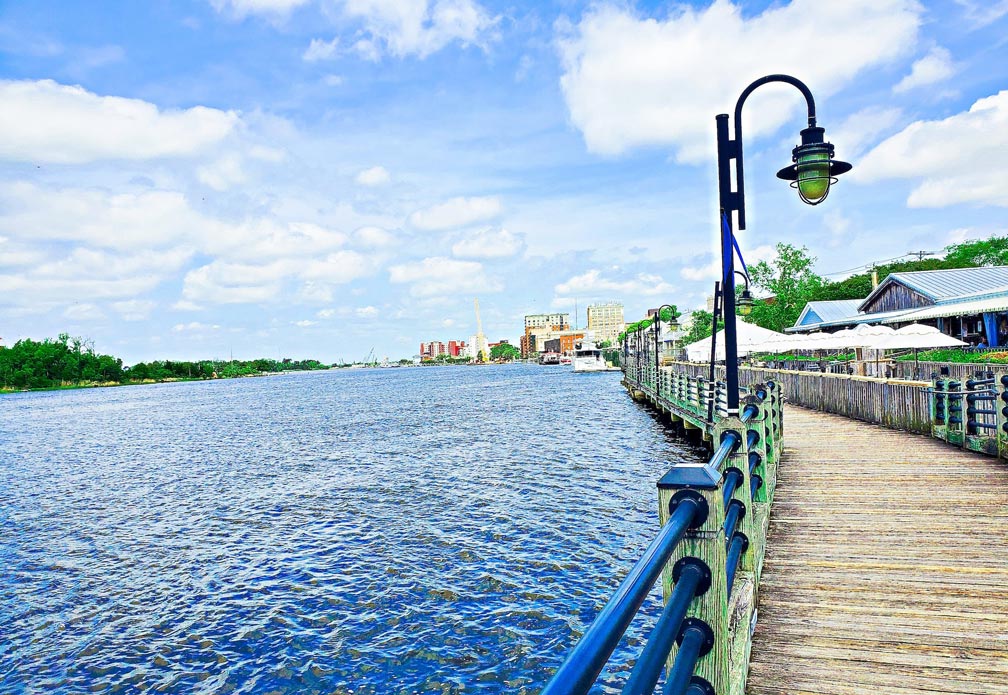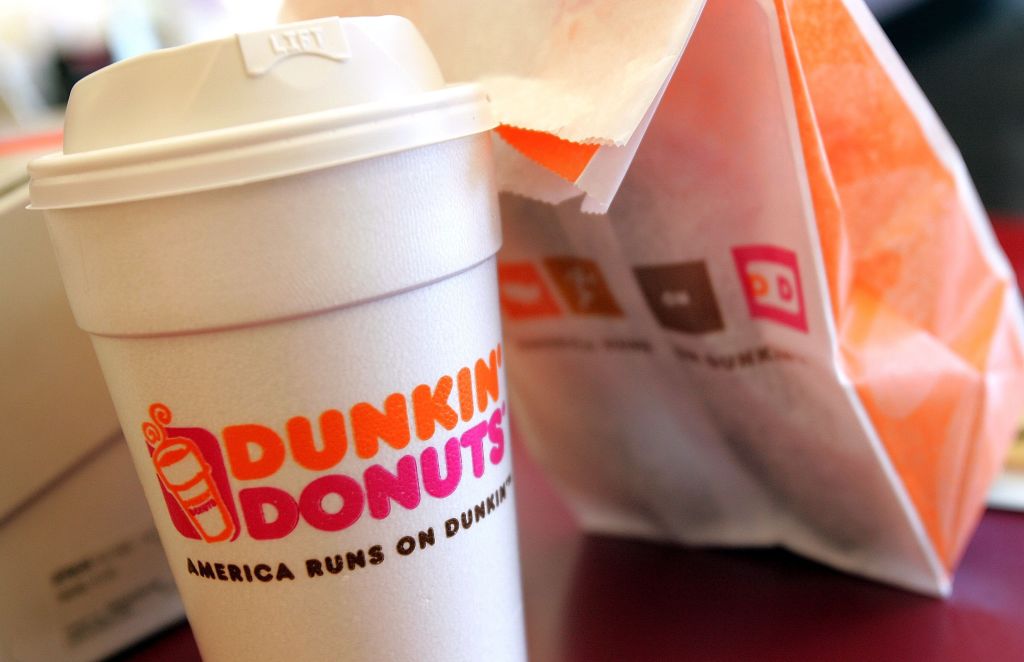Travelers familiar with the coastal city of Wilmington, North Carolina know the town for its beautiful beaches and small-town vibes. Many visitors don’t know the wealth of untaught history whose impact still influences the city.
Wilmington native and community activist Cedric Harrison is on a mission to change that. Harrison is the Founder of the nonprofit organization Support The Port and its for-profit counterpart, WilmingtoNColor (pronounced Wilmington in Color). A proud product of the city’s public housing, Harrison became inspired while in Atlanta working with organizations like Hosea Feed the Hungry and Black Celebrity Giving to contribute to his hometown community.
“I realized one of the main issues at home was the violence and how young the individuals around the violence were. It seemed like it started going from 30- and 20-year-olds to 18-, 17-, and 16-year-olds; so I created Support the Port to address, bring awareness to, and advocate for my community,” Harrison says.
Through his nonprofit work, Harrison began peeling back the layers of the city’s history. From his research, Harrison created a shuttle tour fueled, in part, by the nation’s only successful overthrowing of the government, otherwise known as a coup d’etat. Travel Noire spoke with Harrison to learn more about WilmingtoNColor and his vision to amplify the region’s rich Black history.
As Winston Churchill said, “Those that fail to learn from history are doomed to repeat it.”
TN: For comparison’s sake, can you paint a picture of what Wilmington looked like for Black people prior to 1898?
Harrison: Imagine how Atlanta is today; that’s what Wilmington was back in 1897. You had Black politicians; some of the individuals who ran the town were Black. Some of the first Black medical doctors of North Carolina lived in Wilmington. The first Black architects, builders, and carpenters lived in the area; longshoremen, the men that worked on the docks and at the ports. That was Wilmington.
Wilmington had its own Black newspaper, The Daily Record, and was one of the first in the state. It was run by Alexander Manley, a mulatto whose father was white and served as a governor. [Manley’s father] loved his son. He positioned him in a space where he was able to be successful, and everything Manley did was a step forward for the Black community, and not just in Wilmington. They had a voice. They funded things that pushed the culture forward and provided a platform at a very early stage of platforms like that being in existence.
TN: What happened in 1898 that changed all of that?
Harrison: There was an article that came out [written] by a daughter of the Confederacy that said in order to save Southern womanhood–they weren’t talking about Black women within that–they had to lynch a hundred negroes a day.
Alexander Manley, who came from an interracial household and married into one, responded by saying a lot of light-skinned kids he knew had white fathers, and how we know of the stories behind how that usually happened. In comparison, it wasn’t popular to be an interracial couple where you know the man and woman were in a willingly consensual relationship; particularly if they were showing that in public from a Black man dating a white woman perspective.
Essentially, Manley responded by saying that when you saw a white woman with a Black man, it was because she wanted to be there. Not because of the fake narrative trying to be established through propaganda saying everything we, [Black men], take and beast. The King Kong narrative.
Manley’s article was published in The Daily Record. Eventually, closer to election time, the article was used in white majority settings to scare white people into believing that the end of slavery was going to lead to Black people taking over the nation.
The energy used from that ultimately rallied individuals and lead to the events of the only successful coup d’etat to ever happen in the country.
TN: So, what actually happened in 1898?
Harrison: In the days leading up to the actual coup on November 10, 1898, during early voting and on Election day, there was a group called the Red Shirts–the equivalent of today’s Proud Boys group–that would be at voting precincts scaring people away from the polls. For people trying to early vote, they would be there to stop progressive white voters from voting.
They wanted to get rid of the Fusionist Party which was running Wilmington’s political scene at the time. The Fusionist Party was a biracial political party; they weren’t Democrats or Republicans. They were free Blacks and white farmers and progressives. The majority of the alderman seats and seats of the city’s municipalities were run by these individuals. Not all of them were Black; many were white, including the city’s mayor.
One of the reasons the coup was successful was that not all of the Fusionist Party members were up for re-election or scared out of voting. The day after the election took place, the people who weren’t up for re-election were held at gunpoint and escorted out of Wilmington. Out of town. Out of their seats.
The individual who lead this tragic event, Alfred Waddell, wrote himself into the mayor seat and stayed mayor for many years. The others who helped him execute this were put in positions of power and their names are still on buildings around town. Their names are still on streets and tied to large amounts of dollars being used to move and control the city today.
TN: And what happened to Black people during all of this?
Harrison: The day they burned down The Daily Record they went to a neighborhood called Brooklyn that consisted of prominent Black families and individuals and began shooting individuals where they stood. They broke into people’s homes and shot them. They took it to the streets and shot into crowds of Black people who were gathering for supplies or information to learn what was going on and how to get away from it. As the angry mob circled each block, some people were shot during these gatherings.
Some people got killed. Others got away. People ran to swamps and others hid in the back of cemeteries. People were being killed and left to lie in the streets. Some people were killed and their bodies were thrown into the Cape Fear River. They are probably still there today as we speak.
The next day, those who were still around who could have made a difference–primarily Blacks but also progressive whites–were escorted out of town. And there was nothing ever done about it.
TN: What exactly is WilmingtoNColor?
WilmingtoNColor is the only heritage shuttle tour in the world that tells the story of the only successful coup d’etat on US soil.
The tour continues to upgrade itself. I might give a tour to a descendant of the angry mob and they may share another story with me at the end of the tour. Or I might have said something on the tour that inspired something they heard a family member say; now we’re connecting the dots and more things start to make sense.
As we continue to dig deeper, there’s so much with the tour that we’re still critiquing every day.
We want to make sure we tell people about the only successful coup in 1898, but we also want to make sure it’s not the only thing we talk about. What happened in 1898 is not a good story to tell. It’s not something that’s going to empower you. It’s like watching 12 Years a Slave. I wanted an experience that made you feel like when you watched Glory. So, we did that by finding and telling the glory stories of Black accomplishments that were great not only locally but statewide, in the Southeastern region, or even nationally.
As we talk about Black leaders like Abolitionist David Walker, Senator Abraham Galloway, and General Joseph McNeil, there’s a certain level of empowerment that comes with those stories. We wanted to make sure we have a lot of that in the tour but also mixed in enough of 1898 for people to be able to share the story and also encourage them to go home, dig deeper, and learn more.

TN: What are your favorite one or two stops on the WilmingtoNColor shuttle tour route? And why?
Harrison: The James Drawborn Sampson house. I can’t go into the story because it will spoil it, but the JDS story helps people understand how Wilmington had this unique population of Black excellence while people in the South were still being hung for knowing how to read and write.
How did Wilmington get all of these free Blacks? People know about that more when it comes to Charleston, South Carolina and less about Wilmington, but after slavery was abolished Wilmington was a powerful place to be for Black people.
The JDS story helps us understand how that happened because the Sampsons were some of the first freed Blacks in North Carolina. Sampson ended up becoming the richest Black man in Antebellum North Carolina but you have to take the tour to learn how he got to that point.
My other favorite story is the Payne’s Tourist Home. During the existence of the Green Book, Wilmington had the second largest number of listings in North Carolina, with fifty businesses compared to Charlotte’s fifty-three. Between the 1930s and 1960s, the Green Book was mandatory when coming to a town like Wilmington partly because of what happened in 1898. The Payne’s Tourist Home was one of the most popular, most visited businesses; the Airbnb of its time. It was a bed and breakfast that knew Blacks couldn’t go everywhere to have a good time, so the dining room doubled as a dance hall and bar. The living room doubled as a library. Prominent musicians like Lionel Hampton, Count Basie, and Duke Ellington stayed there when they came to perform in Wilmington. The house is still Black-owned today by the same family–the Lofton family–and is currently a boarding home.
TN: What’s your vision for what happens next?
Harrison: We’re currently looking to build out the way we tell these stories. We want to continue to connect with people who understand telling stories through virtual reality, interactive applications, and the digital space overall.
My plan is to bring Wilmington back to Black. Everybody likes to say buy back the block, but why?
I want a block we buy back in Wilmington that is solely dedicated to highlighting, remembering, and promoting the history of Wilmington, its Black history, and its legacy. I want to use that to project why we need to have that Black excellence back in Wilmington.
The vision is to have a museum that talks about the only successful coup d’etat in American history that attracts people from around the world to visit. And after the museum experience, they can economically support the surrounding Black-owned businesses and other forward-thinking initiatives that amplify today’s progressive movement to help change the effects of the past.
We want to grow WilmingtoNColor and be around for decades to come, and we know we will only be able to do that by getting better at the things we don’t know. We love to connect with people that are smarter than us in those spaces to take us to that place.

WilmingtoNColor currently accepts shuttle tour bookings at least two weeks in advance. The tour is a great addition to your next visit to the Port City, and especially great for corporate diversity, equity, and inclusion programming as well as family, friends, and church groups.
For more information on the shuttle tour, visit wilmingtoNColor.com.





